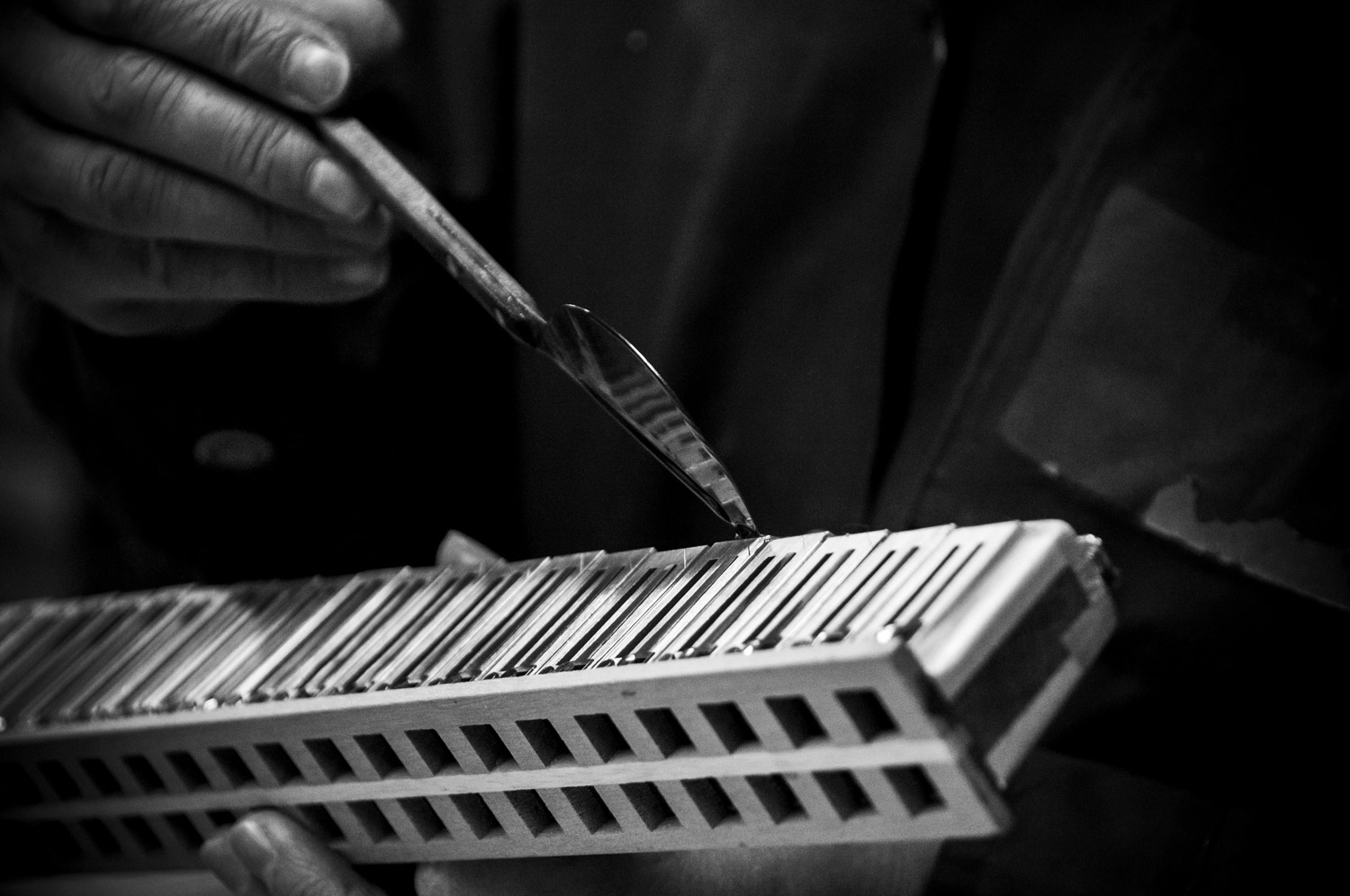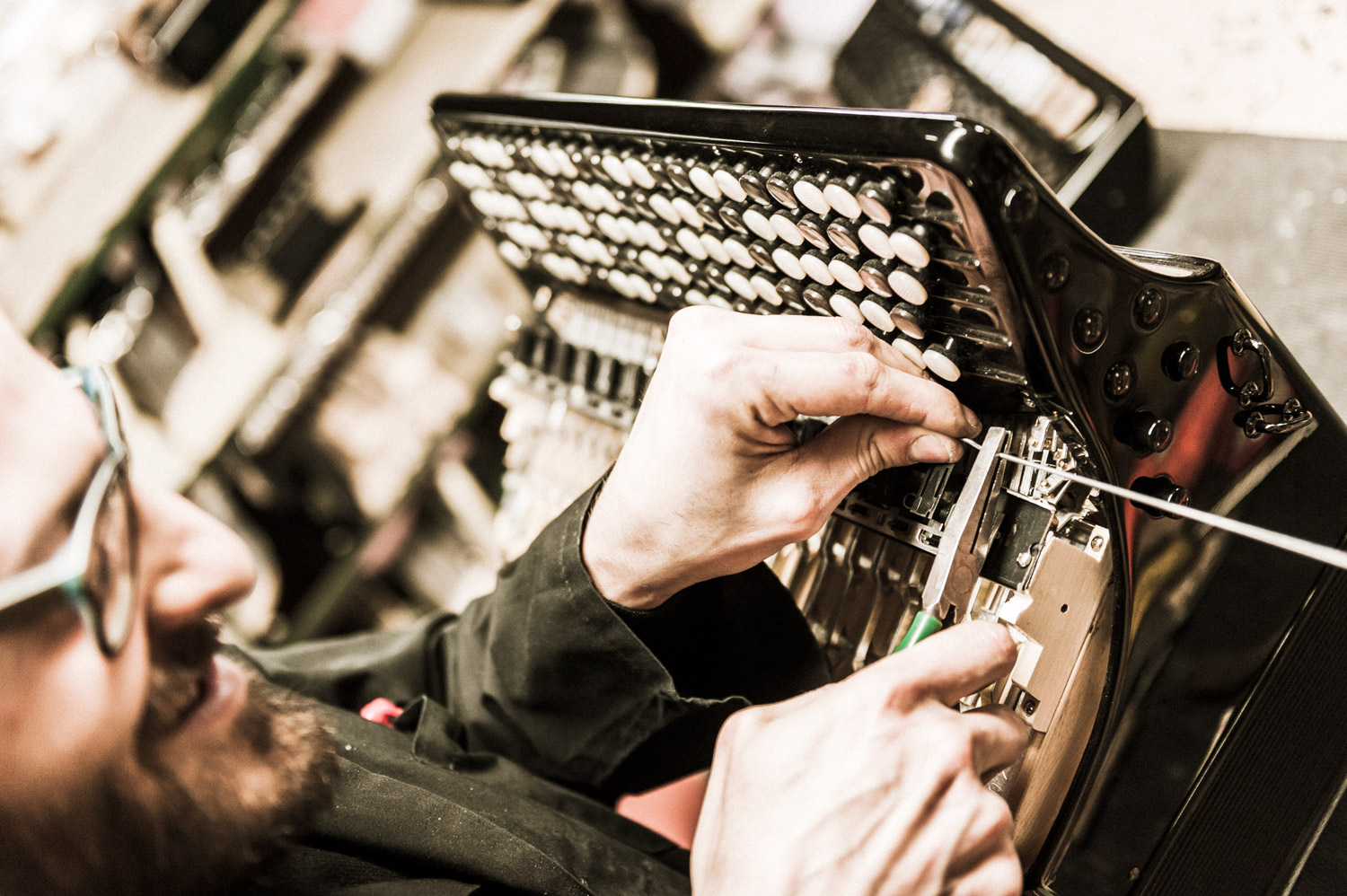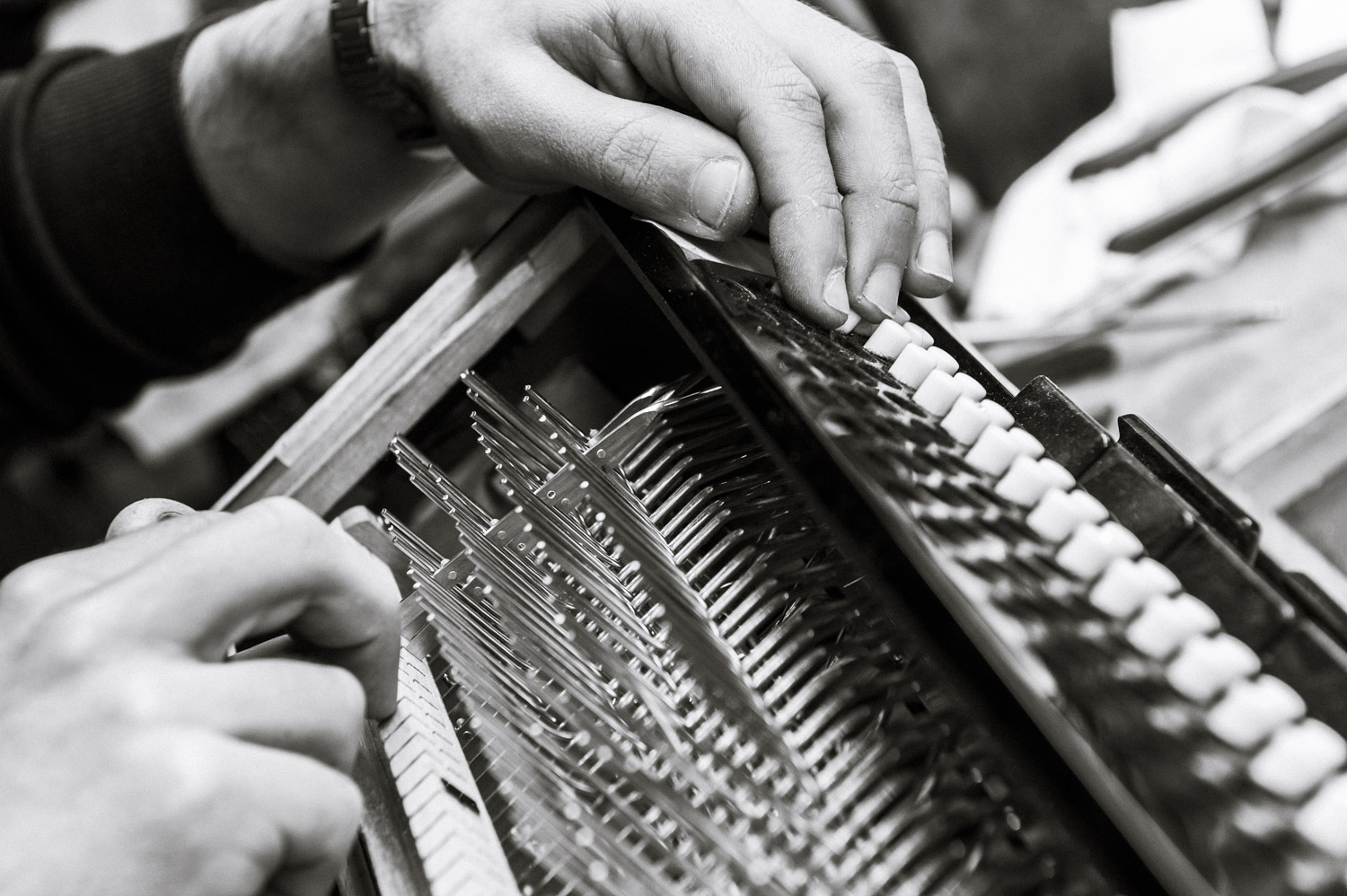
The accordion is composed by a very high number of details, and proper maintenance is essential for its correct operation.
Many parts of the instrument are made of wood, considered a ‘living’ material as it is affected by the changes in humidity and temperature. The accordion is a portable instrument, so it is not uncommon to face unexpected changes in the environment, which can significantly affect its function and sound.
This is especially true for professional accordionists who travel a lot and carry the instrument by car, train and plane. Air transport is the biggest concern, because very often there is no other way than sending it as checked baggage, and on very long journeys the instrument can be held for many hours in very low temperatures.
An instrument that has been exposed to these low temperatures, should remain for a few hours in an environment with normal temperature and humidity before being used. After this time the bellows should be opened and closed several times using the air button, in order to change the air inside and reduce any traces of condensation.
the reeds

The reeds are made of steel, and if they are strongly stressed at extreme temperatures they can break.
The reed tongues are fixed to a metal plate (made of aluminum, duralumin or brass) by rivets or screws; the valves that optimize the action between opening and closing of the bellows are made of natural leather, or plastic, in various thicknesses and sizes, with springs (‘contropelli’) of metal or plastic. The reeds, which always include two opposing reeds, are installed with wax, or with nails or screws onto the reed blocks.
Each of these materials behaves differently according to the changes in temperature and humidity, affecting the accordion far more than other instruments, as the bellows moves large quantities of air.
In instruments where the reeds are installed with wax, it is very important to avoid very high temperature conditions. While the temperature has to be fairly high for the wax to melt, it will ‘soften’ when warmed. If you play the accordion at this ‘softened’ stage, the vibrations could imperceptibly alter the position of the plate, and the intonation would be affected. If you play the accordion when the wax has melted (for example after leaving the instrument in a car during summertime), the reeds can ‘fall’, which requires a very complex and expensive technical service.
A dusty or very humid environment can cause the blocking of some reeds, especially in high quality instruments, where the profile of the reed is very precise in its seat. Sometimes it is possible that the problem can be solved on its own, but sometimes it is necessary to open the instrument to unblock the reed, an operation that is very simple in itself, but does requires skill.
If the instrument remains unused for some time in a humid environment, it may happen that the leathers (or ventils) remain attached to the metal, and the corresponding reed will not work properly. While this problem often disappears with regular use, sometimes it is necessary to open the instrument and “detach” the leather; this operation requires competence, although it is very simple to do once you know how.
the registers (left and right) and the chin-registers

Chin-registers are a very useful mechanical device, and becoming more common, but they require a very special care in order not to hit them, especially when the instrument is carried in a backpack. Be aware that an accidental impact could force two or more chin-registers to action simultaneously, forcing the register slides together. Even a very small deformation of one of these slides can cause several registers to function incorrectly, because one or more reeds cannot ‘close’ properly. The same trouble can happen similary to the left hand registers.
While this may sound like a reed is out of tune, a simple adjustment of the register system solves the problem. Of course, this operation must only be done by a competent technician.
the bass mechanics

The bass mechanics are a wonderful work of ‘artisan engineering’, especially those with a converter. There are so many parts involved that over time various components change, certain mechanisms acquire a little ‘tolerance’ and all are subject to wear. All this is perfectly normal, as like all musical instruments with mechanical components, the accordion needs assistance and maintenance.
For converter instruments it is very important to note that you should never push the converter bar while one or more bass buttons are pressed. This could cause the misalignment of some mechanical elements (you would hear notes playing alone) and the only way to put them back in the correct position is to open the bass cover. This is a simple operation, but one that requires competence.
Many musicians learn to do the most common small operations on their own, but if you wish to have the instrument in optimal condition a specialized overhaul is required at least once a year. Otherwise a good accordion can generally be used for several years without major intervention.
the tuning
Accordion tuning is a very complex operation. In a concert instrument there are almost 900 reeds, and the final tuning for each reed can only be done when they are already installed in the instrument. When you remove the reed-block to tune the reed, frequency and sound are completely different from when it is inside the instrument. Therefore, our experienced tuners know how the reeds action will change once it is set inside the instrument, and this attention to detail is carried out for each of the 900 reeds.
If you want to have a perfectly tuned instrument, a complete tuning check is required at least once a year, as changes in temperature, humidity, and simply normal use affect the tuning. This operation can only be done by a highly experienced tuner, because even though the fundamentals of the operation are simple to understand, it is a long and complex process to acquire the necessary skill.
